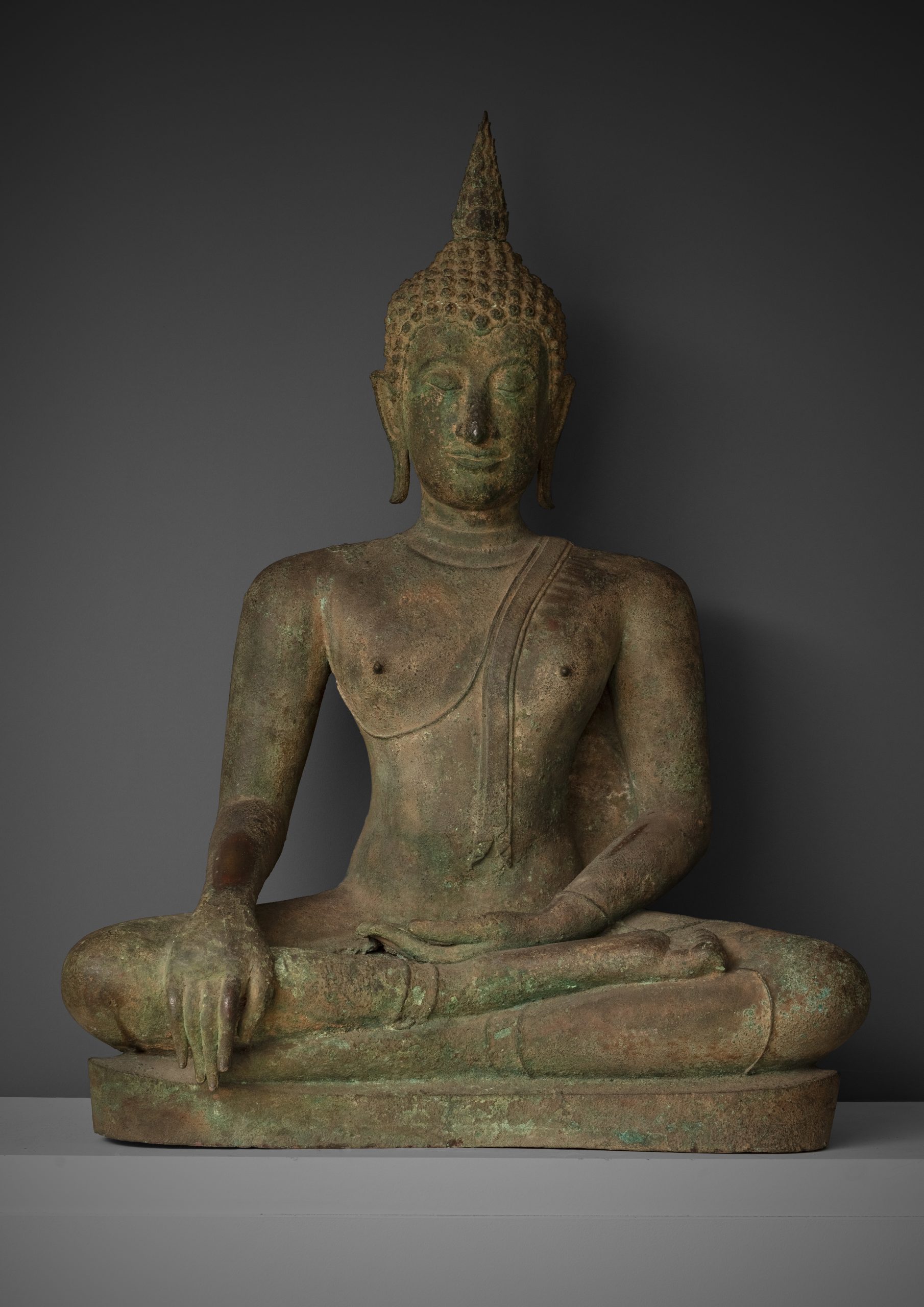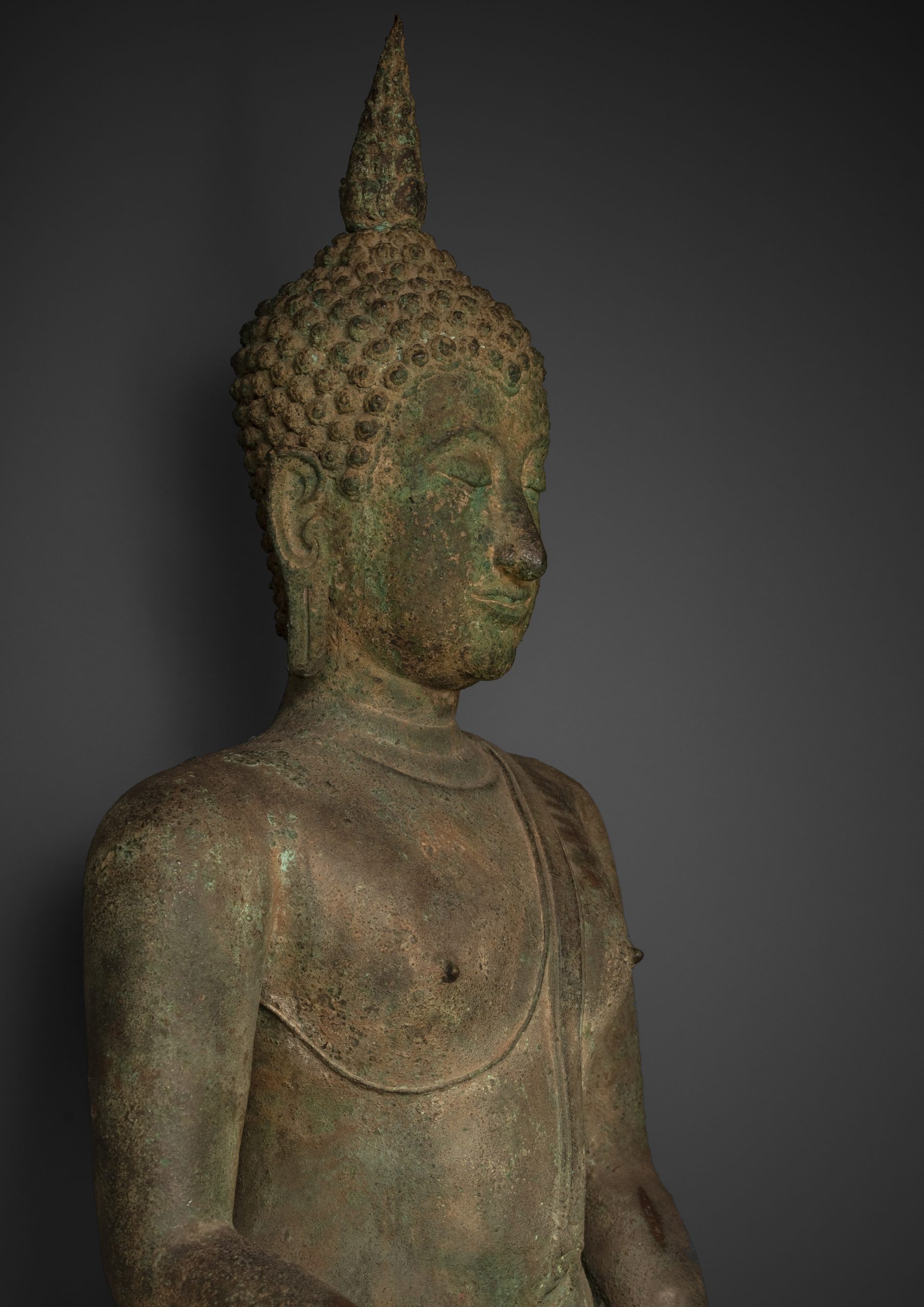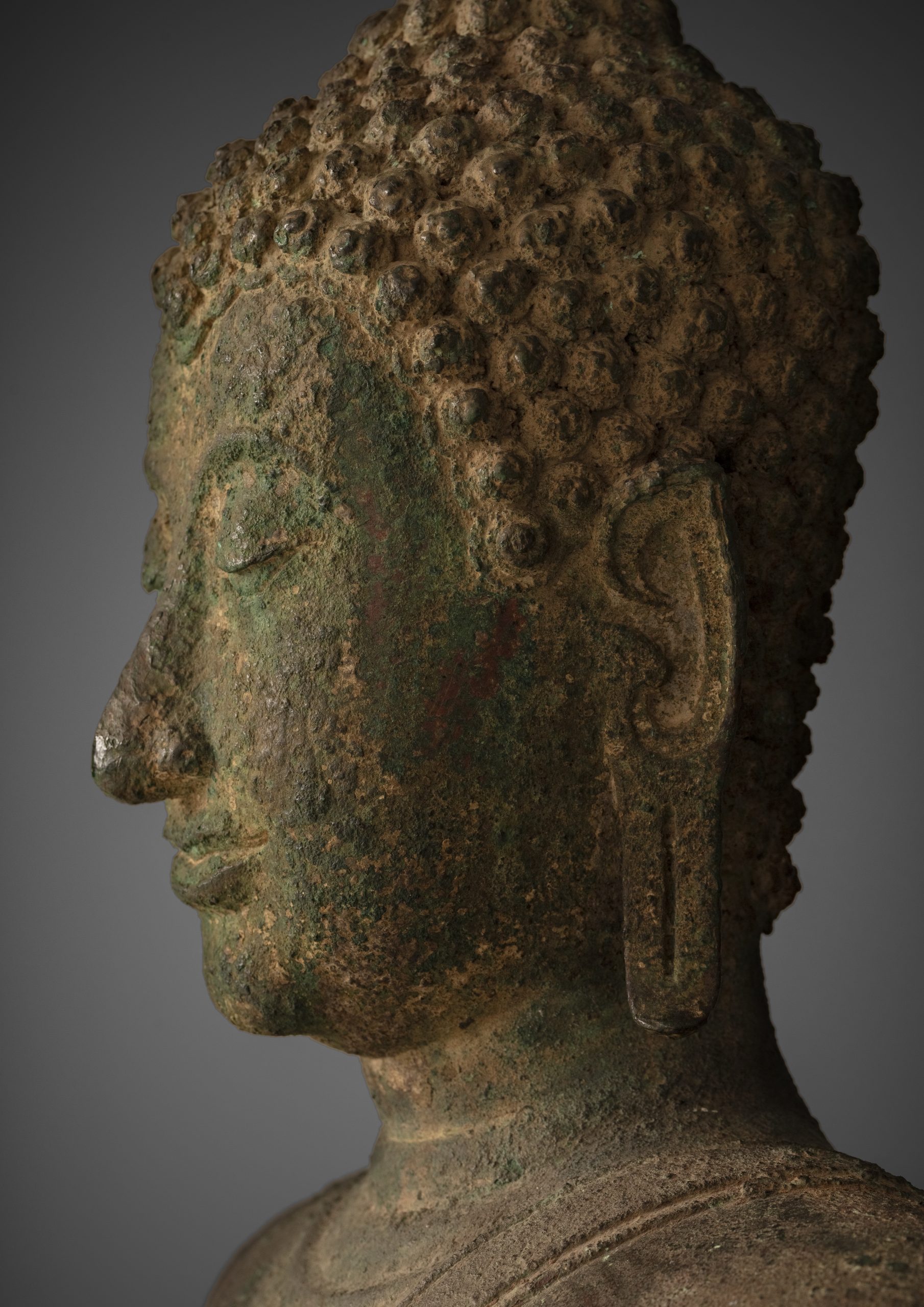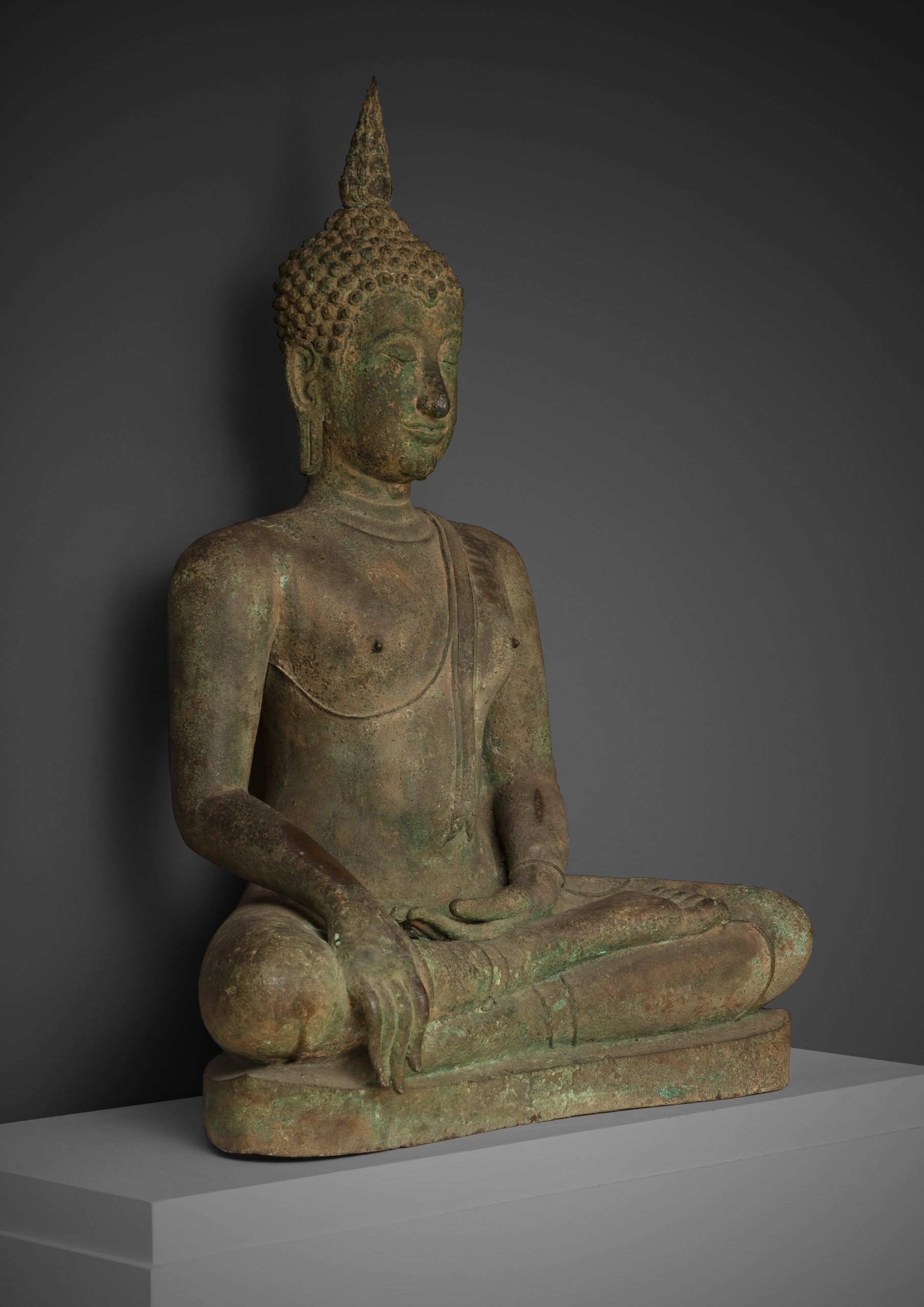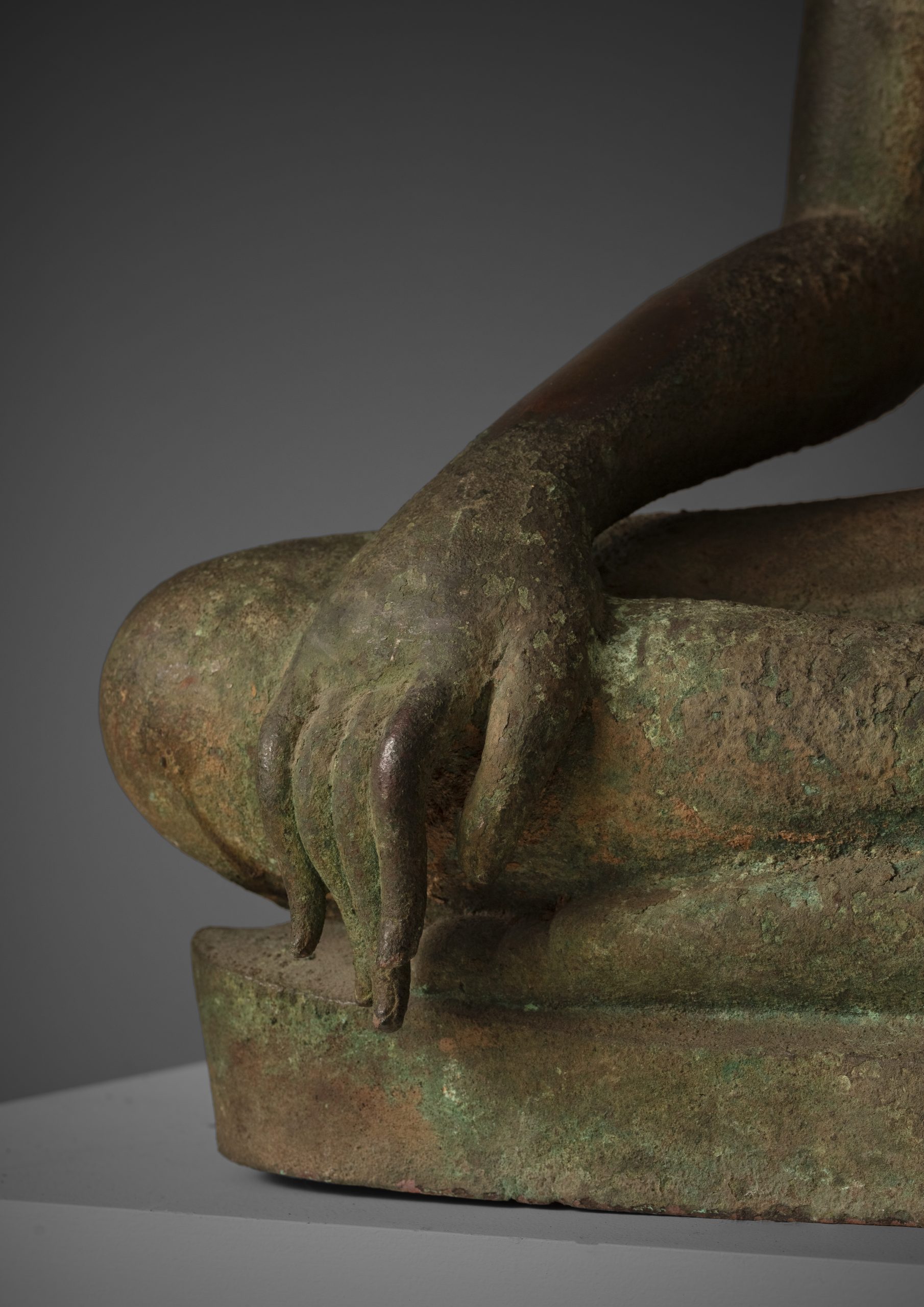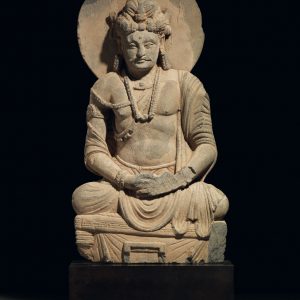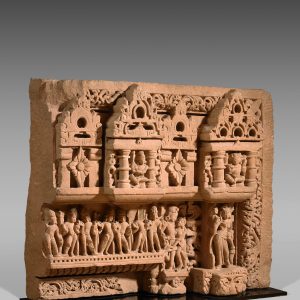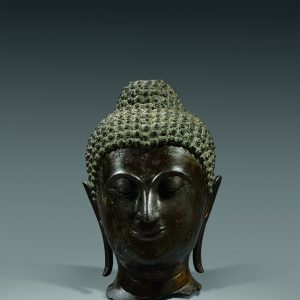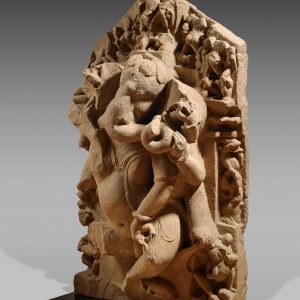Buddha Maravijaya
Bronze with green patina
Thailand
Sukhothai Royaume, 15th century
H. 93 cm
Description
The Sukhothai Buddhas remain the most original in Thai art, although the process of shaping the style remains enigmatic. They can easily be identified thanks to their stylized anatomy with harmonious shapes, endowed with all the attributes of the Blessed. This 15th century bronze Buddha Māravijayā is a remarkable testimony to this.
The Blessed One appears seated in vīrāsana, sketching the gesture of taking the earth as witness (bhūmisparśa-mudrā). This gesture symbolizes the victory of the Awakened One over Māra, prince of desires and personification of death. In Gāya in Bihar, in a place called Bodhimaṇḍa where the Buddhas of past cosmic eras had experienced their Enlightenment, the future Blessed One sits under a pipal tree (Ficus religiosa). Māra (“Death”), god of constantly unfulfilled desires, causes of the endless cycle of reincarnations, feels his empire threatened by the discovery of a means of salvation which would be preached to creatures. He seeks to distract the Blessed One in various ways and then claims to claim for himself the throne of Awakening. Śākyamuni calls the earth to witness his good faith in having sworn to bring deliverance to all beings. This iconography is fundamental in Buddhism, which is also very popular in Thailand.
We find in his style the embodiment of compassion: the oval face is noble, balanced, graceful. The heavy, finely drawn eyelids reflect his serene meditation. The Buddha’s lips are surrounded by a peaceful smile. A border defines her hairstyle, traditionally composed of small regular curls covering the uṣṇīṣa, from which the flame (rasmi) springs, symbol of her spiritual elevation. The modeling is very careful and we find both a manifest harmony in the proportions of the body and in the features of the face, specific to Sukhothai art. The firm arms extend from the rounded shoulders, the protruding pectorals are visible through the clothing pressed to the body.
The whole is highlighted with an elegant green patina, of an imposing size, with a harmonious effect, which emanates power and serenity.
The Sukhothai style fully affirms the idealization and sacralization of the powerful figure of the Buddha, particularly through the purity of the features. It is an innovative and inspiring style, which will persist in the production of Thai bronzes until the 20th century.
Provenance: Purchased in Thailand 1927 – 1928, with certificate from the Légation de la République Française. Listed in the inventory of Mr. JC Moreau Gobard in July 1965.

